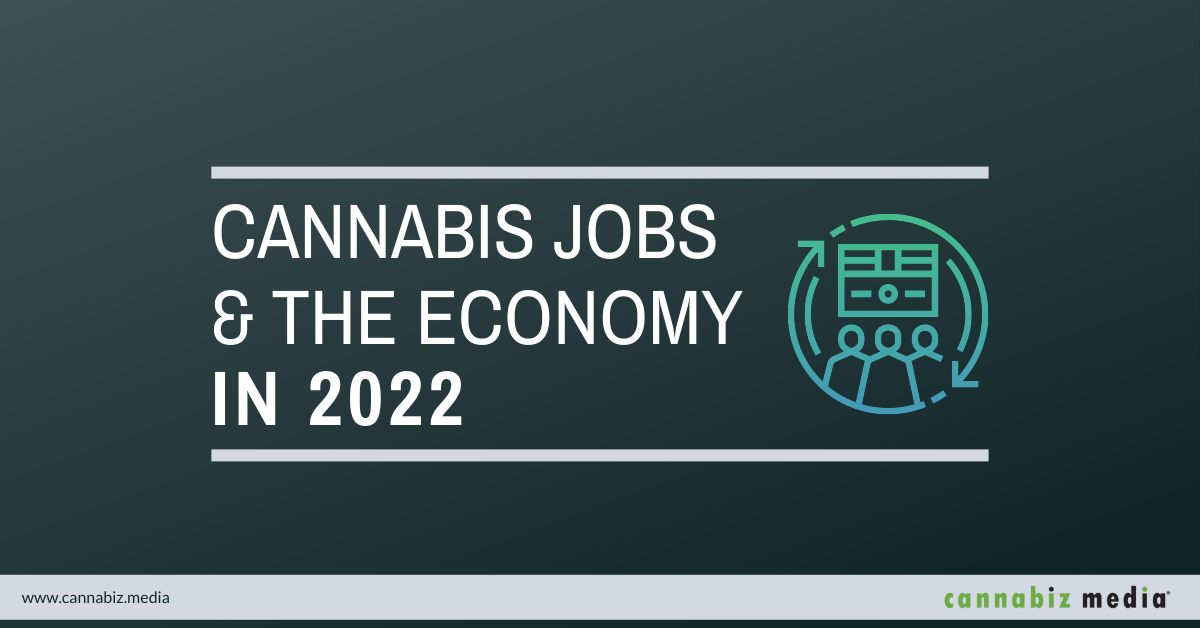
Cannabis jobs and the economy in 2022
Be the first to know when new content like this is available!
Subscribe to our newsletter to receive notifications of new posts, local news and industry insights.
Thanks very much! Your submission has been received!
Oops! Something went wrong while submitting the form.
Just five years ago, in 2017, the legal cannabis industry in the United States employed 122,800 people. In January 2022, there were 428,059 legal cannabis jobs, according to the 2022 Leafly Jobs Report, published in partnership with Whitney Economics.
The number of people working in and with the cannabis industry has increased every year since Leafly started collecting data five years ago. Between 2021 and 2022, the industry created 107,059 jobs – a 33% increase from the previous year.
The cannabis job market in 2022
According to Leafly’s study, among the states with the highest number of cannabis jobs is California, which has nearly 120% more cannabis jobs than second-place states Colorado, Michigan, Illinois, and Massachusetts — in that order.
Of course, the number of cannabis jobs in a state depends on several factors, including whether the state has legalized both medical and adult-use cannabis, the maturity of the state’s cannabis market, the number of active licenses throughout the supply chain, and the number of potential consumers .
Leafly predicts that cannabis sales will grow the most in 2022 and 2023 in New Jersey (74%), Illinois (58%), and Pennsylvania (57%). Other states that have significant opportunities to create cannabis jobs in the near future include Arizona, California, Connecticut, New Mexico, and New York.
Salaries for cannabis jobs are also increasing. According to CannabizTeam’s 2022 Cannabis Industry Salary Guide report, cannabis salaries increased by an average of 4% in 2021 and executive compensation by as much as 10%. In fact, salaries increased for all cultivation, extraction, testing, manufacturing, distribution, retail, sales, marketing, accounting, finance, administrative, legal, human resources, and compliance jobs researched by the CannabizTeam.
The positions that saw the highest median pay rise (10%) in the United States from 2021 to 2022 include VP of product development (manufacturing) and chief marketing officer (marketing), followed by a 9% pay rise for Chief Revenue Officer (Sales). ).
It’s important to note that salaries vary widely between roles and from one state to another. Vangst’s 2021 Salary Guide (published March 2022) reports that its researchers found that salaries for trimmers and post-harvest workers at a licensed cultivation facility ranged from $14 to $22.50 per hour and $85,000 to $160,000 for a cultivation manager can lie.
Similarly, packers working in a manufacturing facility could make $14 to $20 an hour, compared to $140,000 to $185,000 for a vice president of manufacturing. Budtenders working at a licensed retail or pharmacy location could make $14 to $25 an hour, while the vice president of retail operations at a retailer or pharmacy makes $120,000 to $200,000. For delivery jobs, drivers, customer service representatives, and warehouse workers earn between $17 and $21.
Vangst also noted that employee hiring in the cannabis industry is becoming more diversified. As of 2021-2022, several marginalized communities are represented in the cannabis industry workforce, including the following groups: “Black/African descent, indigenous people, non-binary, disabled and veteran status”.
Cannabis jobs and impact on the economy
Whitney Economics reports that total cannabis sales in 2021 were nearly $25 billion. That number of sales is expected to nearly double within a few years, and the number of jobs created to support those sales — and everything that precedes and follows a sale — will also increase. Leafly predicts that the overall forecast for cannabis jobs as the U.S. legal cannabis market matures will be between 1.5 million and 1.75 million jobs.
Based on these numbers, it’s clear that the potential for the legal cannabis industry to inject cash into the local economy is significant. As sales grow, corporate revenues increase, more employees are needed, workers’ incomes and purchasing power increase, and economies thrive.
There’s no doubt that economies will benefit as the cannabis industry — and the job opportunities that come with it — continue to grow. The bottom line is that states where markets have the greatest potential for expansion and growth, as well as markets where large illicit operations continue to thrive (i.e., where there are large opportunities to shift illicit sales to the legitimate market) are the ones to eye should keep. Through further legalization and efforts to eliminate illicit markets, these states could create vast amounts of jobs and revenue for their economies.
What’s next for cannabis jobs and the economy?
Cannabis-related ballot measures are up for vote in several states in November, and President Biden recently launched a federal movement that could help the cannabis industry, cannabis jobs and the economy going forward.
Meanwhile, the cannabis industry has weathered the COVID-19 pandemic and the Great Resignation. Employment growth is expected to continue for the foreseeable future, bringing many benefits to the local economy.

Post a comment: